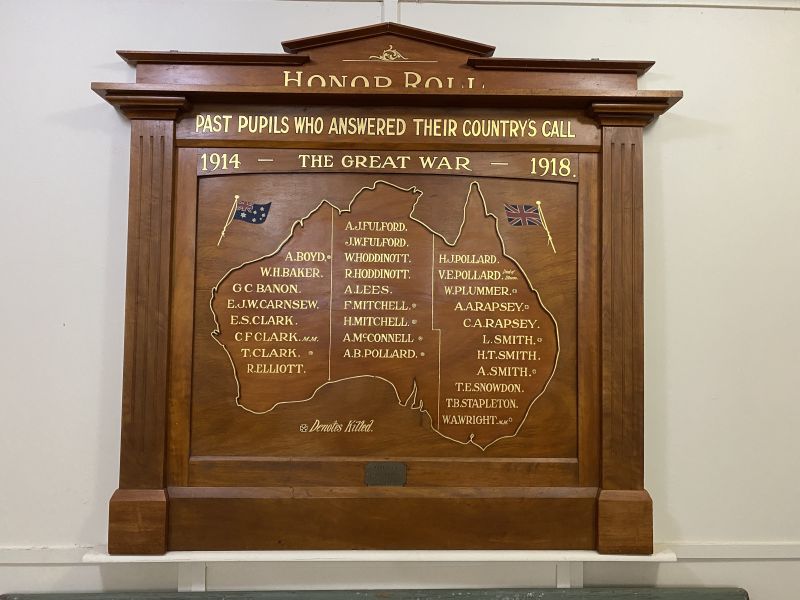Andrew Boyd
Andrew was born in Melbourne on the 21st of November, 1893 to James and Jeanie Boyd. He attended Bonegilla State School and, in his later years, Wesley College in Melbourne. In December of 1910 he joined the Bank of New South Wales at Albury, New South Wales. In the following year he worked at Wodonga and was then promoted to the position of teller at the Culcairn Branch. In August of 1914 he became assistant at Chiltern.
On the 4th of August 1915, Andrew enlisted at Chiltern, Victoria. He was allocated the Regimental Number 3032 and placed in the 7th Reinforcements for the 24th Battalion. After weeks of training in Victoria he embarked on HMAT A73 Commonwealth at Melbourne on the 26th of November, 1915. Andrew arrived in Egypt during January of the following year. On the 24th of February he was transferred to the 8th Battalion.
One month later the battalion boarded HMT Megantic at Alexandria and arrived at Marseilles in the south of France on the first day of April. The next record in his active service form is dated the 1st of November, 1916 which indicates that he has been admitted wounded to hospital. On this date the 8th Battalion was moving up the line and no action is recorded in their war diary. It is possible that Andrew was wounded by shell fire. He was taken to the 14th Corps Midlands Division Stationary Hospital where he was treated for wounds on his scalp. By the 5th of November he had been transferred to the 46th Casualty Clearing Station and then to the 3rd Stationary Hospital at Rouen near Le Havra on the coast. His wounded were serious enough for him to be sent to England where he was admitted to Duchess of Cornwell Red Cross Hospital and then after one month to No. 2 Australian Auxiliary Hospital in Southall Middlesex. Andrew then spent from the 7th of December 1916 to the 23rd of March 1917 at No. 4 Command Depot at Wareham in Doreset. The role of these depots were to move the soldiers from being convalescents to be 'effective'. Once soldiers were 'hardened', they went to the Australian Overseas Training Brigade and then eventually returned to the front in France.
Andrew remained in England until the 15th of October when he was sent back to France. During this time he was promoted to Corporal for his valuable work in straightening out the camp accounts books. He rejoined the 8th Battalion on the 18th of that month. In February of the following year, he spent ten days in hospital with dermatitis. Skin diseases was so prevalent in the soldiers in the field that the Australian Medical Corp created Divisional Scabies Stations to treat them. Andrew rejoined his battalion on the 27th of February. On that day the battalion was making preparations to relieve the 1st Battalion at La Clytte. Upon completing the relief they were warned to stand to in readiness for an attack by the enemy. Fortunately the night passed quietly other than some minor shelling.
In March and April the battalion helped to stop the German spring offensive. On the 14th of April it was stationed in trenches on the outskirts of Hazebrouck. At 0100 hours an enemy party about 100 strong was observed approaching the 8th’s positions. It was permitted to approach within about 20 metres when heavy lewis gun and rifle fire were brought to bear on it. It caused the enemy to withdraw leaving their dead behind them. Three hours enemy artillery became extremely active. During this engagement Corporal Andrew Boyd was killed in action.
He was buried in the Nieppe-Bois (Rue-de-Bois) British Cemetery at Vieux-Berquin, 3 miles south-east of Hazebrouck in Row B, Grave No. 21. He is also remembered at the Australian War Memorial Roll of Honour, the Villers-Bretonneux Memorial (Australian National Memorial), the Bank of New South Wales Roll of Honour Book, and the Bonegilla State School Roll of Honour. For his service he was awarded the British War Medal and the Victory Medal

 Stephen Learmonth
Stephen Learmonth